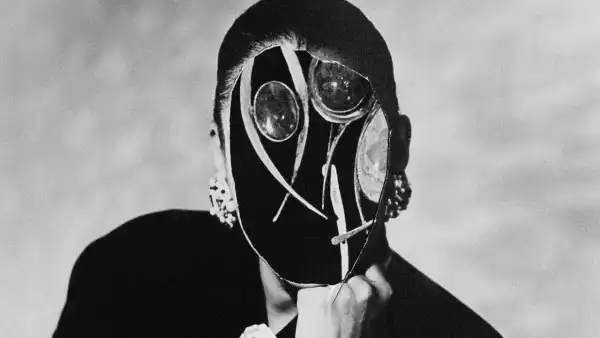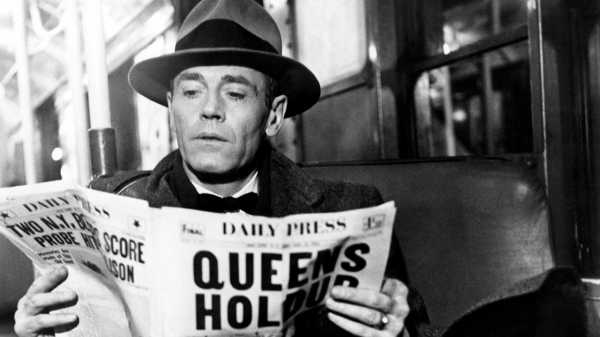
Save this storySave this storySave this storySave this story
This magazine’s ongoing centenary celebration has included a cinematic component: a series at Film Forum, “Tales from The New Yorker,” which featured movies connected to The New Yorker’s history, whether because the source material was published here or because contributors to the magazine were involved with the movies in question. But the series left one crucial aspect of The New Yorker’s identity unheralded—its place in the city—and, because the current centenary issue is focussed on New York, this list of some favorite New York-centric films is a timely garland.
Ten is an apt number for a centenary celebration, and I’ve chosen one movie for each decade since the magazine’s founding—from 1925 to 1934, and so on. But I could have doubled or tripled the list with little effort, so wide is the variety of films about the life of the city; what’s more, some of my favorite New York movies (such as “An Unmarried Woman”) are unavailable to stream. I’ve deliberately avoided the modern classics that are instantly associated with the city, whether by Martin Scorsese, Spike Lee, James Gray, or Woody Allen, and have skipped such familiar titles, however exhilarating, as “Saturday Night Fever” and “The Apartment.” Instead, I’ve picked dramas shot on location in fervent detail; a comedy set in a gin-and-whipped-cream New York that existed only in movies; one documentary that delves deep into private lives and public activism in a single neighborhood; and another that meshes cityscapes with the filmmaker’s family story. Many of my favorite New York movies don’t even depict the city—not literally, at least—but, rather, reproduce some version of it in the studio. They capture New York states of mind, of which there are far more than there are residents. New York is a realm of fantasy and myth, obsession and resentment, fear and bewilderment for many who’ve never set foot in it; and many who live here also purvey and perpetuate some version of the imaginary city.
Though maybe that’s the only kind there is: everyone has their own New York, even people who don’t call it home. (Like the cinema itself, The New Yorker has also advanced enduring visions, or versions, of New York, whether in fiction or in reporting.) That’s why it’s tough to pick favorite New York movies: on the one hand, so many good ones have been made about it, but, on the other, none of them gets it quite right—which is to say that no one has caught the city exactly as I’ve imagined it and experienced it. (I’d bet that every New Yorker feels the same way.) But many films, like the works of many writers, have expanded my view of it and deepened my understanding of it. These are only a few of them.
1925-34: “Me and My Gal” (1932, Raoul Walsh)
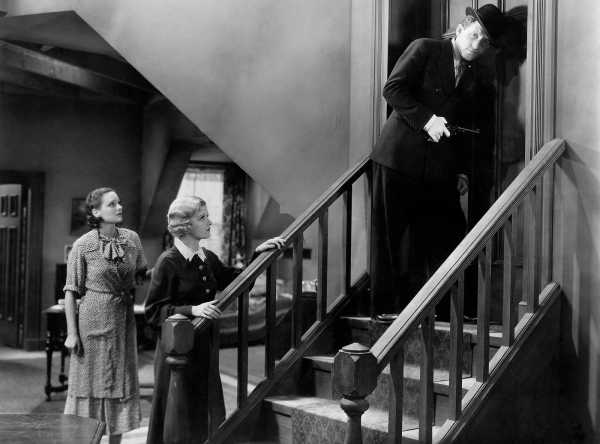
Marion Burns, Joan Bennett, and Spencer Tracy in “Me and My Gal.”Photograph from 20th Century Fox / Everett
New York, it’s said, is all fast talk and street smarts, and Walsh—born here in 1887, raised in comfort, and a denizen-at-will of the seamy side—delivers both in this spirited tale of a cocksure, snappy policeman (Spencer Tracy) on waterfront duty and his courtship of a wisecracking luncheonette cashier (Joan Bennett) amid the dangerous pursuit of a gangster on the loose. The film is populated by a teeming array of sharply observed characters—and further enriched by deftly staged antics from the tragicomic theatre of working people’s lives.
1935-44: “That Uncertain Feeling” (1941, Ernst Lubitsch)
Turns out there’s as much romantic pugnacity and ribald humor among the posh set of Park Avenue as there is on the waterfront—at least according to Lubitsch. “That Uncertain Feeling,” which launches its story with erotic confessions under a psychoanalyst’s probing gaze, is centered on the bored young wife (Merle Oberon) of an insurance executive (Melvyn Douglas) whose all-work, no-play habits drive her into the arms of a caustically arrogant composer (Burgess Meredith). The musician is a walking satire of downtown presumptions—and his ferocious intellect turns out to be all business, too. Beneath the film’s mockery of corporate trivialities and highbrow impertinence alike, Lubitsch finds a bilious well of irreconcilable desires.
1945-54: “The Clock” (1945, Vincente Minnelli)
Although this bittersweet love story, set amid eyecatching New York sites, was shot in a studio, it’s nonetheless something like New York neorealism because, like the seminal Italian movement, the essence of Minnelli’s film is war. The comedic, exquisitely nuanced whirlwind romance between a soldier on forty-eight-hour leave (Robert Walker) and a lonely young secretary (Judy Garland) ticks tensely with the timepiece of the title. Almost immediately after their meet-cute, the couple races to get married and, in the process, encounters an overwhelming variety of people, neighborhoods, and problems, all composed in grand tableaux of the city’s painterly settings, indoor and out—even as the soldier readies himself for the hazards of combat.
1955-64: “The Wrong Man” (1956, Alfred Hitchcock)
Leave it to Hitchcock, one of cinema’s most accomplished contrivers, to approach a true-crime story with fanatical attention to real-life detail. In “The Wrong Man,” filmed on location across the city, Henry Fonda plays a night-club bassist who lives in a modest house in Queens with his wife (Vera Miles) and young sons. When he stops by a local insurance office that’s recently been robbed, he’s mistaken for the perpetrator—and is soon arrested. Hitchcock, who’d expressed a lifelong fear of the police, here shows the terrifying mechanisms of the so-called justice system breaking a man and his family even as it exonerates him. In the process, he calls into question, with a religious severity, the very notion of innocence. It’s both a shockingly atypical Hitchcock film and one of his most personal works.
1965-74: “Summer in the City” (1969, Christian Blackwood and Robert Leacock)
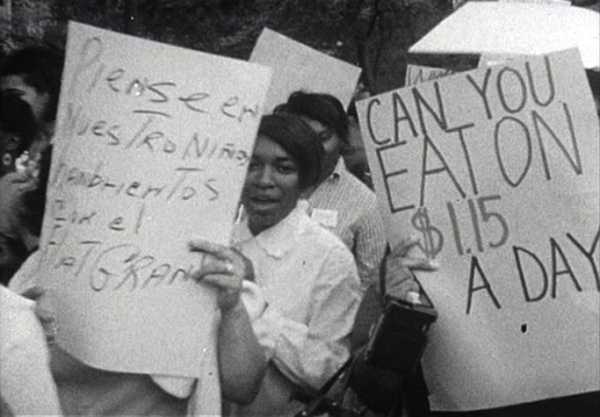
A still from “Summer in the City.”Photograph courtesy Michael Blackwood Productions
Sometimes it takes an outsider to notice what’s in plain sight and to examine it with inspired curiosity. The German writer Uwe Johnson, who was then living on the Upper West Side, teamed up with the German-born filmmaker Christian Blackwood and his colleague Robert Leacock for an extraordinary exploration of the neighborhood. “Summer in the City” offers some of the most lucid and varied views of New York life I’ve ever seen on film—capturing everything from the jazzy rhythms of the streets to police repression of political protest—with a particular eye toward residents whose voices were rare in mainstream movies. Many conflicts and crises revealed there are unresolved to this day.
1975-84: “News from Home” (1976, Chantal Akerman)
Ditto. Akerman, the Belgian writer-director of the film named the best of all time by the most recent Sight and Sound poll, lived in New York in her early twenties. After completing that masterwork, she returned to the city and shot this bracingly original documentary about her prior stay. It’s built around letters that her mother had written to her then, which are recited in voice-over, accompanied by poised, transfixing images of New York streets and sites that Akerman endows with a second, secret life by way of the absences that they represent.
1985-94: “What About Me” (1993, Rachel Amodeo)
Poof goes the punk romanticism of the rundown Lower East Side. The writer and director Rachel Amodeo also stars in her only feature to date, playing a young woman named Lisa who seeks freedom there and instead finds sexual violence and homelessness. The movie is filled with real-world downtown luminaries such as Richard Edson, Nick Zedd, Richard Hell, Johnny Thunders, and Dee Dee Ramone, as well as the poet Gregory Corso and the actress Judy Carne. Their personalities, along with the cruel allure of the cityscape itself, lend the grim story a glimmer of transcendence. Amodeo’s performance as a traumatized urban survivalist, striving and burdened, recalls the expressive intensity of silent cinema.
1995-2004: “Down with Love” (2003, Peyton Reed)

Ewan McGregor and Renée Zellweger in “Down with Love.”Photograph from 20th Century Fox / Everett
The repressed exuberance of the Rock Hudson and Doris Day comedies, which enshrined the city’s mythic early sixties as swinging in style but not in substance, gets a wild revision in this outrageous and ingenious spoof that’s also an improvement on the originals. A macho investigative journalist (Ewan McGregor) plans a cruel deception in order to humiliate a feminist author (Renée Zellweger), but the complications prove giddy. High-rise gloss, space-age gadgetry, and drop-dead fashion converge with supersonic dialogue and the cast’s sharp-edged energy to provide an effervescent countermyth.
2005-14: “Margaret” (2011, Kenneth Lonergan)
Filmed in 2005 but released only in 2011 after epic conflicts with a producer, Lonergan’s second feature is the most cross-sectionally systemic drama of New York life that I’ve ever seen. The story begins with horror: an impulsive act by an Upper West Side teen-ager named Lisa (Anna Paquin) leads to the accidental death of a pedestrian, enmeshing Lisa in high-stakes legal battles. Racked by guilt, she brings a whirlwind of turmoil into her family life, her circle of friends, her school, the victim’s social circles, and pretty much everyone she encounters. The drama of her reckless and passionate efforts to make amends also yields some of the most trenchant and memorable dialogue in modern cinema, which Lonergan joins to turbulent images of the city that set the talk—in indelible performances by an extraordinary cast—as if operatically.
2015-24: “A Thousand and One” (2023, A. V. Rockwell)
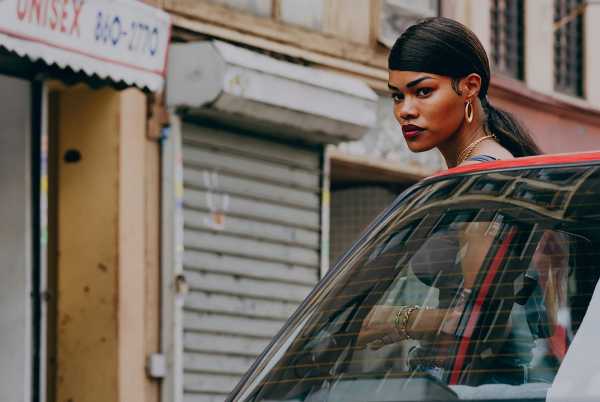
Teyana Taylor in “A Thousand and One.”Photograph by Aaron Ricketts / Courtesy Focus Features
Time is hard to film, but Rockwell, directing her first feature, does it with a roiling blend of intimacy and grandeur, in a story that covers more than a decade, from the Giuliani era of the nineteen-nineties, with its oppressive policing, to the real-estate-driven transformations of the aughts during Bloomberg’s mayoralty. After a young woman named Inez (Teyana Taylor) is released from jail, she returns to her Brooklyn neighborhood and schemes to reunite with her young son, who’s in foster care; then, child in tow, she moves to Harlem to rebuild their lives, and reconciles with her former partner (Will Catlett), before institutional forces upend their existence again. The drama is, at the political level, a tale of gentrification and its devastating effects; it’s also a family saga of overwhelming tragic power and a loving vision of the moral necessity and inherent fragility of communities. ♦
Sourse: newyorker.com



